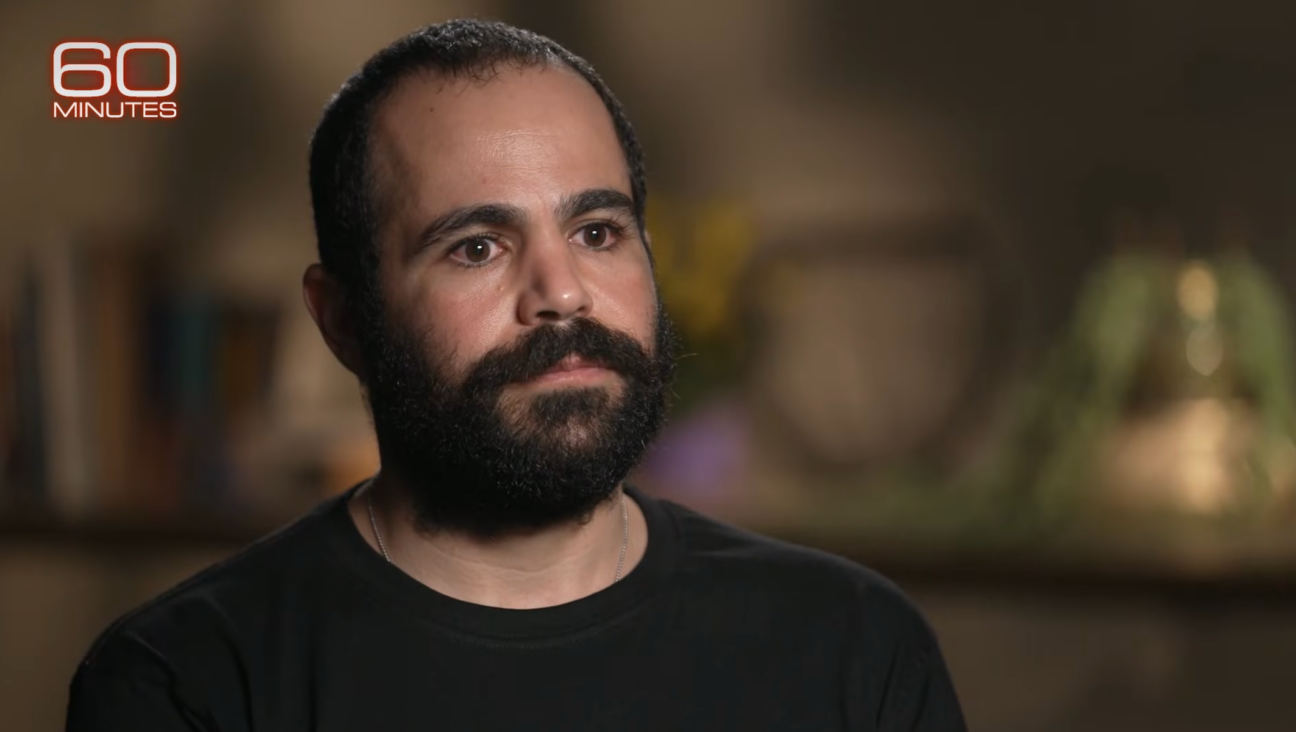Chief Rabbis Repeat Promise To End Slaughter Method
After an article in the Forward detailed a controversial kosher slaughtering method, the Israel’s Chief Rabbinate has repeated an earlier promise to do away with it.
A spokesman for the Chief Rabbinate told The Jerusalem Post this week that “we are doing everything to improve” the process known as “shackle and hoist” — a practice widely used in South American slaughterhouses, where a majority of Israeli kosher meat and a growing portion of kosher meat consumed in America originates. The method involves pulling the cattle up into the air by its hind legs and then dropping it onto the ground where it is restrained by workers and slaughtered.
The current assurances from the Chief Rabbinate come two months after Israel’s Ashkenazic chief rabbi, Yona Metzger, privately promised American kosher-certification authorities that the Chief Rabbinate would end the practice, according to a letter that was given to the Forward.
In the letter from December 25, Metzger wrote that “the chief rabbinate will consult with experts and invest considerable energy in finding additional appropriate practical solutions which will reduce the claims regarding cruelty to animals.”
Metzger wrote the letter to Rabbi Menachem Genack, CEO of the Orthodox Union’s Kashrus Division. The O.U. has been quietly pressing the Israeli Chief Rabbinate over the last year to do away with “shackle and hoist” slaughter. The American kosher market has been rocked by a series of recent scandals involving allegations of inhumane treatment of animals.
Given the earlier assurances made by Metzger, Genack told the Forward that he is not expecting any immediate change in “shackle and hoist” slaughter.
“They made a conceptual decision to do this, but the implementation is something different, something that is going to take a long time,” Genack said,
One of the primary difficulties is that Israeli meat importers do their slaughter in plants that are rented from South American companies — making capital improvements more difficult.
Metzger’s letter to Genack came after the chief rabbis met with kosher authorities in Israel, including a leading veterinarian, Rabbi I.M. Levinger. Levinger told the Forward that at that meeting the chief rabbis talked about doing away with “shackle and hoist,” but without a definite timetable.
“I came to the meeting, and I was ready to do something, but they didn’t move in between,” Levinger said.
“They said they wanted to get the feedback from the field,” Levinger added. “If you give the feedback to the slaughterhouses, it’s not so easy to get the right answers, because the slaughterhouses are interested in the business and not in the treatment of animals.”
Since that meeting, the Forward has published an article detailing “shackle and hoist” slaughter and the animal-rights group PETA released a video of the slaughter method from a plant in Uruguay.
The spokesman for the Chief Rabbinate told The Jerusalem Post this week, “We plan to meet soon with importers and slaughterhouse owners who use the method in an attempt to reach an agreement.”
The Chief Rabbinate did not respond to requests for comment from the Forward.
The Forward is free to read, but it isn’t free to produce

I hope you appreciated this article. Before you go, I’d like to ask you to please support the Forward.
At a time when other newsrooms are closing or cutting back, the Forward has removed its paywall and invested additional resources to report on the ground from Israel and around the U.S. on the impact of the war, rising antisemitism and polarized discourse.
Readers like you make it all possible. We’ve started our Passover Fundraising Drive, and we need 1,800 readers like you to step up to support the Forward by April 21. Members of the Forward board are even matching the first 1,000 gifts, up to $70,000.
This is a great time to support independent Jewish journalism, because every dollar goes twice as far.
— Rachel Fishman Feddersen, Publisher and CEO
2X match on all Passover gifts!
Most Popular
- 1

Film & TV What Gal Gadot has said about the Israeli-Palestinian conflict
- 2

News A Jewish Republican and Muslim Democrat are suddenly in a tight race for a special seat in Congress
- 3

Culture How two Jewish names — Kohen and Mira — are dividing red and blue states
- 4

Opinion Mike Huckabee said there’s ‘no such thing as a Palestinian.’ It’s worth thinking about what that means
In Case You Missed It
-

Fast Forward The NCAA men’s Final Four has 3 Jewish coaches
-

Fast Forward Yarden Bibas says ‘I am here because of Trump’ and pleads with him to stop the Gaza war
-

Fast Forward Trump’s plan to enlist Elon Musk began at Lubavitcher Rebbe’s grave
-

Film & TV In this Jewish family, everybody needs therapy — especially the therapists themselves
-
Shop the Forward Store
100% of profits support our journalism
Republish This Story
Please read before republishing
We’re happy to make this story available to republish for free, unless it originated with JTA, Haaretz or another publication (as indicated on the article) and as long as you follow our guidelines.
You must comply with the following:
- Credit the Forward
- Retain our pixel
- Preserve our canonical link in Google search
- Add a noindex tag in Google search
See our full guidelines for more information, and this guide for detail about canonical URLs.
To republish, copy the HTML by clicking on the yellow button to the right; it includes our tracking pixel, all paragraph styles and hyperlinks, the author byline and credit to the Forward. It does not include images; to avoid copyright violations, you must add them manually, following our guidelines. Please email us at [email protected], subject line “republish,” with any questions or to let us know what stories you’re picking up.














